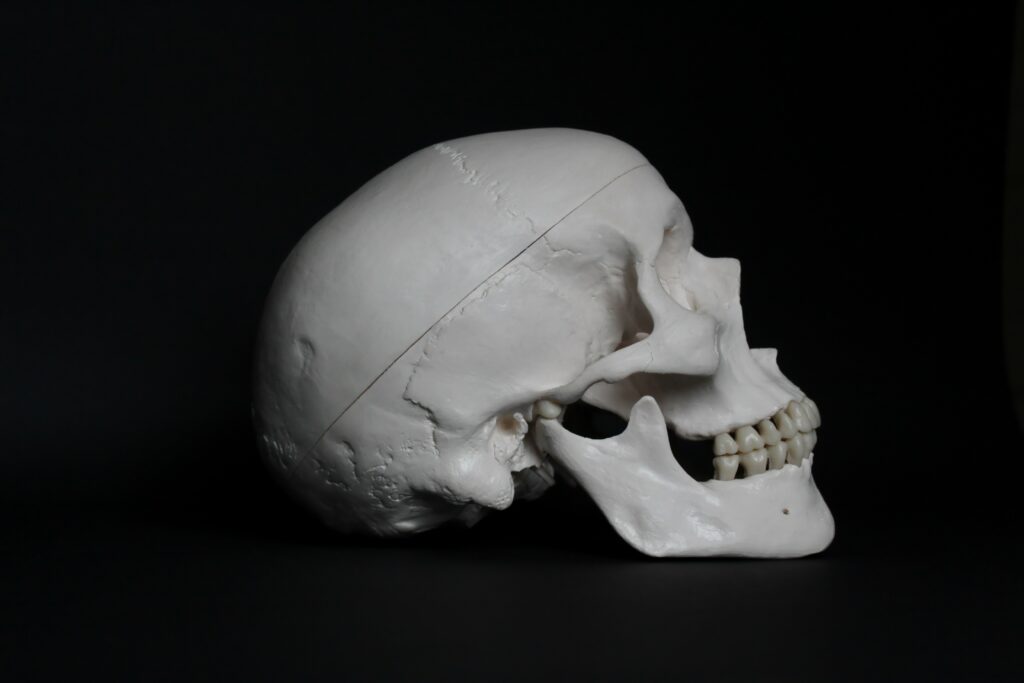
Learning Objectives
Name and describe key bone markings, their functions, and their role in the skeletal system using skeletal models, 3D digital tools and anatomical references.
1. Introduction
The surface features of bones vary considerably, depending on the function and location in the body. Each has its own unique story to tell. Bone markings are specific anatomical features on bones that serve important functions such as:
- Providing passages for blood vessels and nerves
- Creating articulation points between bones
- Serving as attachment sites for muscles, tendons, and ligaments
These features generally fall into three main categories:
- Openings
- Depressions
- Projections
- for joints &
- for muscle/tendon/ligament attachment
Openings, Depressions and Projections
2. Categories of Bone Markings
Openings (Holes or Passageways)
These openings allow structures like blood vessels, nerves, and air to pass through bones. Their size and shape reflect the structures they accommodate.
| Marking | Description | Example |
| Foramen | Round passageway/opening through bone | foramen magnum (occipital bone of the skull) |
| Meatus | Canal or tube-like passageway or opening to a passageway | external auditory meatus (ear canal) |
| Sinus | Air-filled space in bone | nasal sinus (skull) |
Depressions (Grooves or Shallow Areas)
These are indentations or grooves on bone surfaces that can house other structures, such as nerves or muscles. Some serve as articulation sites, while others accommodate soft tissues like vessels or tendons.
| Marking | Description | Example |
| Fossa | A shallow depression in a bone, sometimes made to articulate with another bone | mandibular fossa (temporal bone); olecranon fossa (humerus); iliac fossa (pelvis); acetabulum (hip socket) |
| Sulcus | Narrow groove or furrow on bone surface that usually accommodates blood vessels, nerves or a tendon | intertubercular sulcus (humerus) |
Projections (Bones for Joints or Muscle Attachments)
These are raised areas where bones meet to form joints or where muscles/tendons/ligaments attach.
- Projections for Forming Joints.
These projections help two bones meet and form movable joints. The surfaces are shaped to fit together—such as rounded heads or flat facets—to allow movement and articulation.
| Marking | Description | Example |
| Head | Expanded end of bone supported by neck that articulates with another bone | head of femur, humerus & rib |
| Facet | Small flat smooth surface allowing bones to glide on at a joint | superior and inferior articular facets (vertebrae); Facet for rib articulation (thoracic vertebrae) |
| Condyle | Smooth rounded articular process that means knuckle | mandibular condyle; femur condyle; distal condyle (capitulum + trochlea) of humerus |
B. Projections for Muscle, Tendon, or Ligament Attachments
These are raised areas or processes that protrude from the bone surface. They serve as attachment points for muscles, tendons, and ligaments. Their size and shape often reflect the strength and direction of the forces applied to the bone.
| Marking | Description | Example |
| Epicondyle | Prominence above a condyle | medial & lateral epicondyles (humerus) |
| Spine | Sharp, pointed slender process | ischial spine (pelvis); spinous process (vertebrae); spine of scapula |
| Trochanter | Broad, flattened & rough process | greater & lesser trochanters (only on femur) |
| Tubercle | Small, rounded process for muscle attachment | greater & lesser tubercles (humerus); tubercle (rib-not for muscle attachment) |
| Tuberosity | Rough, large elevated surface for muscle attachment (big bump) | deltoid tuberosity (humerus); ischial tuberosity (pelvis); tibial tuberosity |
| Crest | Ridge-like structure projecting from the surface or border of a bone | iliac crest (pelvis) |